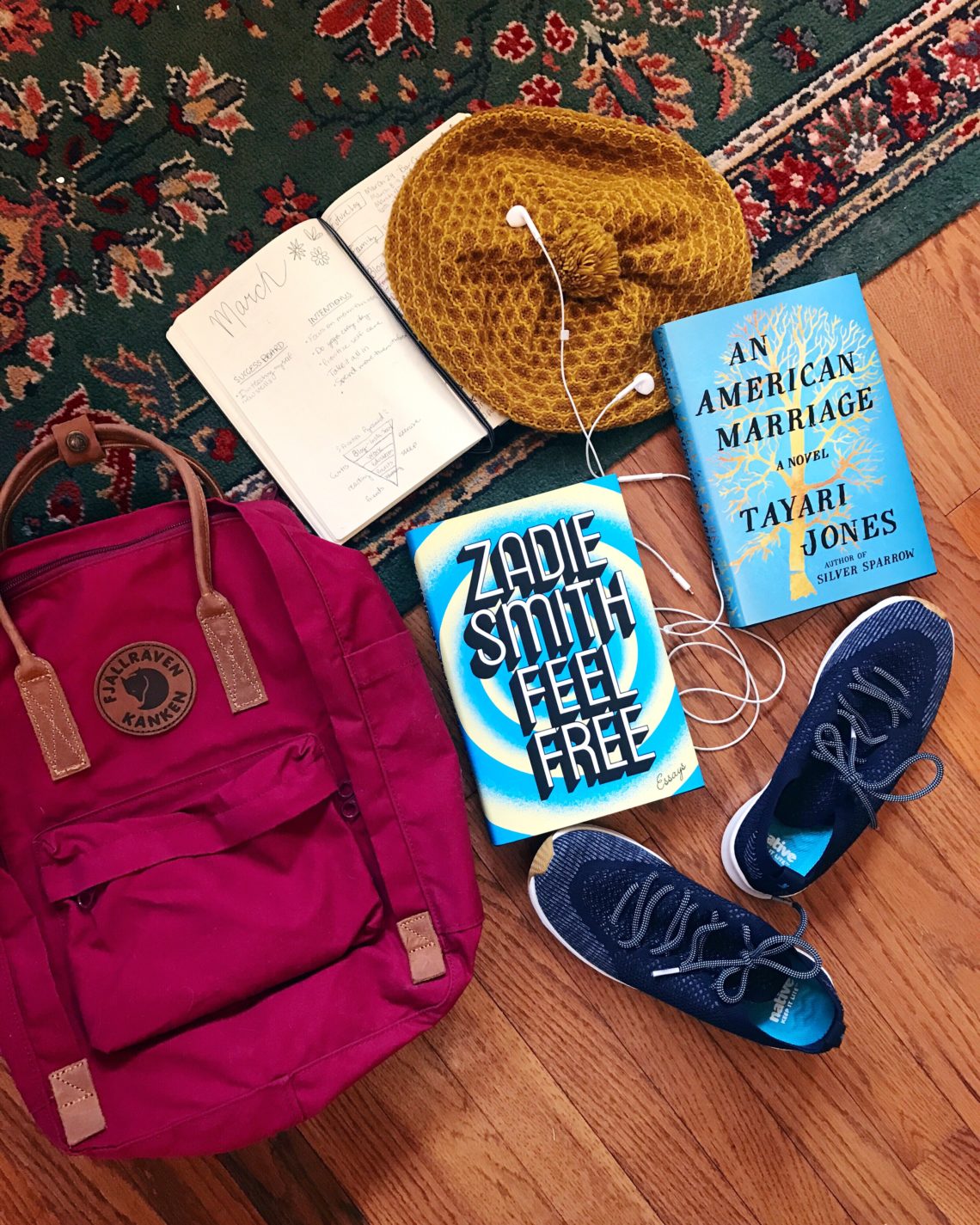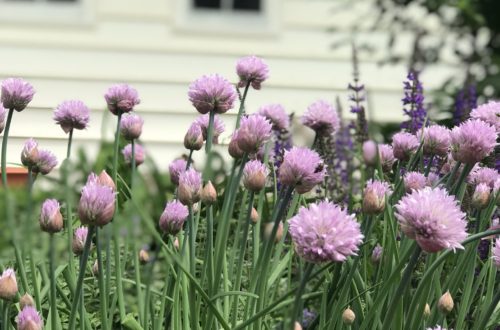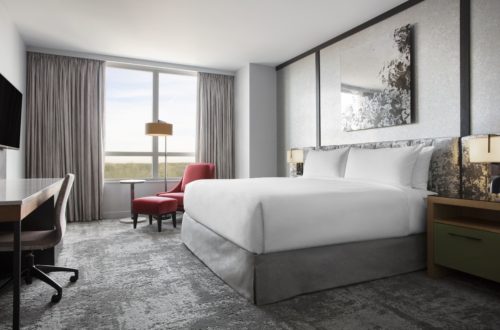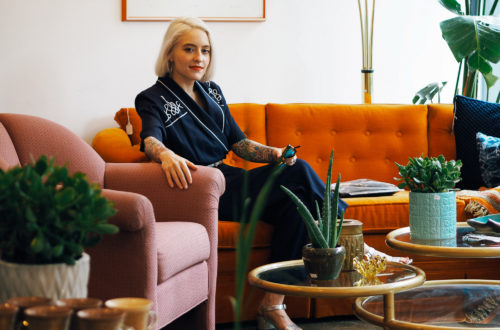
Zero Waste, Minimalist, and Frugal Travel
If you’ve read my blog for a little while, you probably know travel is a big part of my life. I travel for fun, to visit family, and for work as well. I’ve been lucky enough to see a lot of the United States, and to do a major backpacking trip of Western Europe. I recently published my “Travel Bucket List,” in which I shared all the dreamy places I’d like to go next, but today (while I’m sitting in an airport, nonetheless!) I’d like to talk about how I like to travel. I’ve talked about how and why I like to travel slowly, but I also value zero waste, minimalist, and frugal travel as well. If I’m going to travel a lot, I want to make sure I’m being as low impact on the earth, my stress levels, and my wallet as possible.
First off, I want to share the tools that make zero waste, minimalist, and frugal travel possible for me. These are the must have things I take on every trip.
My Must-Have Packing Supplies
- I’ve flown four times this month, and each time I’ve used my Fjällräven Kanken backpack. I have the version with laptop pouch that holds a 15” laptop. You need a durable, comfortable backpack so you can travel hands-free!
- I swear by my Hydro Flasks. I carry both the 24oz. water flask and the 20oz. coffee thermos with me every time I travel.
- Packing cubes! I have the packing cubes from REI and they keep any bag well organized.
- You need a good pair of tennis shoes. I recently purchased a pair of AP Mercury Lite Knit slip-on sneakers by Native Shoes, which are cruelty-free and vegan, and I absolutely love them. They’re comfortable on the plane, slip on and off easily, and you can wear them in almost any occasion, making for a more minimalist packing experience.
- A charging block to keep your electronics charged.
- I always take my bullet journal when I travel because it contains everything from my schedule to lists, to blog plans, to journal entries. I use the classic Leuchtturm 1917 bullet journal.
- Reading material. It takes up space, but it’s a travel must for this book worm.
Now that you have the basic supplies we can move on to my zero waste, minimalist, and frugal travel tips.
How to do Zero Waste, Minimalist, and Frugal Travel
Zero waste is a slow living movement designed to significantly reduce the trash and waste humans produce. According to Be Zero’s blog: “Zero waste doesn’t mean producing or consuming nothing. It’s about carefully and intentionally designing, producing, and consuming without waste as an end product.” While it’s not possible to travel zero waste, it is possible to significantly reduce the waste we produce while traveling. Often zero waste has the fringe benefit of being frugal, too. You can save the environment and your wallet at the same time. These are my zero waste and frugal travel tips.
- Bring your own water bottle. Like I mentioned, I travel with my Hydro Flask. I fill up the water flask immediately when I get through security and drink a TON of water while I travel. Having this 24 oz flask allows me to save money and reduce impact by not having to buy expensive, plastic water bottles in the airport. I also fill up right before I go on the plane so I don’t need to take the plastic cups from the flight attendants.

2. Bring your own coffee thermos. Again, I pack my Hydro Flask coffee thermos. When I get on the plane and the flight attendants bring the drink cart around I ask them to fill my thermos instead of giving me a paper cup of coffee. Plus, the coffee they give you on planes is free! I do the same thing at hotel breakfast — fill up my thermos and drink the zero waste and frugal coffee to my heart’s content.  3. Bring your own snacks. I pack my own snacks instead of taking the snacks offered on the plane (which always come in a plastic package) or buying over-priced snacks at the airport. On my most recent trips I packed a mix of pretzels, dried apricots, and nuts. I usually bring an apple or two. I’ve even packed a sandwich and salad in a travel tin — these are all foods you can easily get through security and either eat while you wait or on the plane. I don’t know anyone who likes airplane or airport food. If I never have to eat it again, I will be a happy person!
3. Bring your own snacks. I pack my own snacks instead of taking the snacks offered on the plane (which always come in a plastic package) or buying over-priced snacks at the airport. On my most recent trips I packed a mix of pretzels, dried apricots, and nuts. I usually bring an apple or two. I’ve even packed a sandwich and salad in a travel tin — these are all foods you can easily get through security and either eat while you wait or on the plane. I don’t know anyone who likes airplane or airport food. If I never have to eat it again, I will be a happy person! 4. Bring your reusable tote bags. Bringing your own reusable bags is one of the easiest ways to be zero waste at home, but many people don’t think to bring them along on travel. They are actually really helpful when it comes to packing and organizing your suitcase. This way, you don’t need to buy travel laundry bags or additional packing pouches, you can just repurpose something you already have. And then when you get to your destination you can use the tote bags at shops, markets or grocery stores just like you would at home.
4. Bring your reusable tote bags. Bringing your own reusable bags is one of the easiest ways to be zero waste at home, but many people don’t think to bring them along on travel. They are actually really helpful when it comes to packing and organizing your suitcase. This way, you don’t need to buy travel laundry bags or additional packing pouches, you can just repurpose something you already have. And then when you get to your destination you can use the tote bags at shops, markets or grocery stores just like you would at home.
5. Come prepared. You shouldn’t need to accept plastic-wrapped headphones or the weird blankets they offer on long flights, for example, if you come prepared with your own supplies: headphones (and plenty of podcasts downloaded to your phone), plenty of reading material, a scarf that can double up as a blanket, for examples. No need to suffer on your flight if you truly need something, but just think about if you need this disposable items before you accept them from the flight attendants or have to purchase them yourself while on the road.
6. When you arrive at your destination, buy fresh food from local shops and vendors. Usually you can get your produce unwrapped at outdoor farmers markets, which is a fun way to support the local community, take in some cool sights and atmosphere, and buy food for low prices.
7. And you can always grocery shop and cook meals in your residence. If you’re staying in a place with a kitchen, like an AirBnb or a condo, you can save a lot of money and reduce waste by cooking your own meals. It’s a fun way to make a memory, too, if you try to cook a recipe using ingredients from the area, and perhaps have some beer or wine made in that location, too.
And remember, travel is not inherently zero waste or frugal. Of course you’re going to make waste and spend money, that is just part of the give-and-take of travel. There’s no use beating yourself up over a desire to be perfect. But with tips like this you can significantly lower your environmental and financial impact.
And then there is minimalist travel…
This is the area where I could make the most improvements — my husband says I pack to fill the size of any bag I carry. I’m working on it, and here are some tips that work well for me:
- Use a carry on that zips open flat. Both my Fjällräven Kanken backpack and my Osprey Porter 46 Backpack that I take on long backpacking trips are front-loading packs rather than top-loading.
- Use packing cubes and fold you clothes using the KonMari Folding Method.
- Tuck your clothes inside one another: roll tshirts into the bowl of a hat, stuff your socks into your shoes, etc.
- Decide if you can purchase the thing (cheaply!) when you get there. This applies to “emergency” items you might be tempted to pack like umbrellas, basic drugstore supplies, etc. If you can pick up the item at any Walgreens at your destination, maybe hold off on bringing it and wait to see if you need it when you’re actually in the moment.
And keep in mind you can be both minimal and frugal in your travel activities if you choose to adopt more of a slow travel mindset. You could try these strategies:
- Take in the local scenery. Go for a long walk along the city streets, do some window shopping, people-watch, and take it all in.
- Visit a park. There’s nothing quite like relaxing in a park with a picnic meal. It’s a stress-free, frugal way to take in the local environment.
- Ditch the to-do list. We don’t over-plan our trips and book every hour, meal, and accommodation in advance. Keep your days minimal and affordable.
Zero Waste, Minimalist, and Frugal Travel Overlap. It’s that simple.
The benefits of zero waste, minimalist, and frugal travel are all intertwined. When you do something that is less wasteful, usually that has a positive impact on your wallet. When you pack and plan your activities minimally and simply, usually you end up spending less money.
And all it takes is a little planning before you go. Remember, simple changes are the way to start. You don’t have to be perfect, but you can make small adjustments to the way you travel in order to have a very positive impact.
What strategies do you use to reduce impact when you travel? I’d love to learn from you, too! You can message me on Instagram or Twitter — I’m @brumeanddaisy in both places and we can work together on making our travel experiences better and better. Happy globetrotting, lovelies. -Emily





One Comment
Pingback: